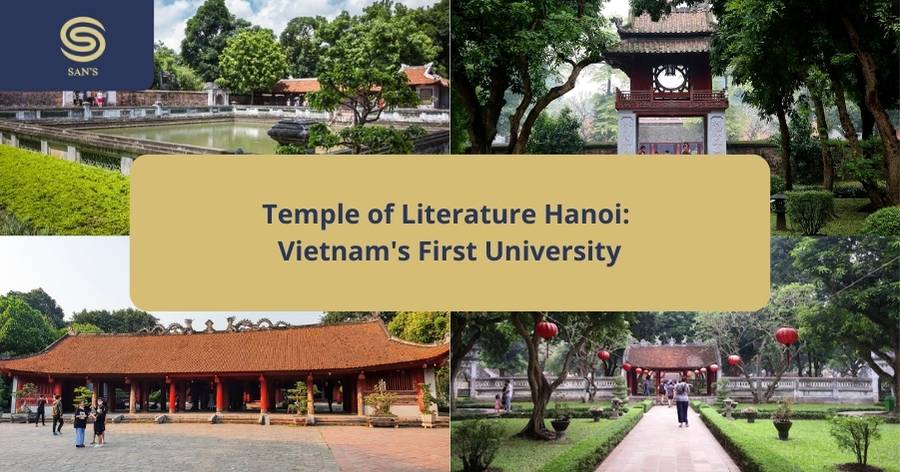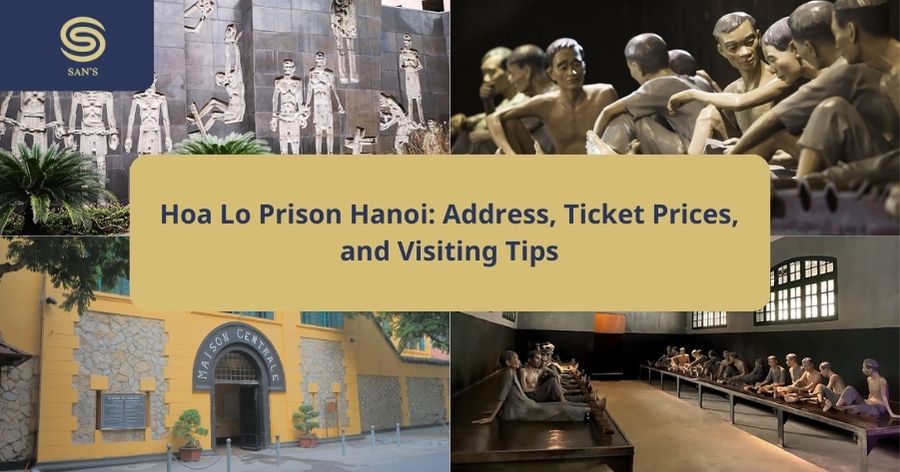The Temple of Literature Hanoi is a revered cultural and historical site, celebrated for its role as Vietnam’s first national university. An architectural wonder and a symbol of Vietnamese scholarship, the Temple of Literature attracts countless visitors eager to explore. In this article, Sanhotelseries will take a look at the structure, significance, and practical tips for visiting the temple.
Overview of the Temple of Literature in Vietnam
Located in the heart of Hanoi, the Temple of Literature was originally built in 1070 during the reign of Emperor Ly Thanh Tong. It was dedicated to Confucius, whose teachings became the foundation of Vietnam’s educational system for nearly a thousand years.
The temple was soon expanded to serve as a learning center, evolving into Vietnam’s first national university, the Imperial Academy, in 1076. Since then, the temple has been an emblem of Vietnam’s academic and cultural heritage, dedicated to honoring scholars, students, and the pursuit of knowledge.
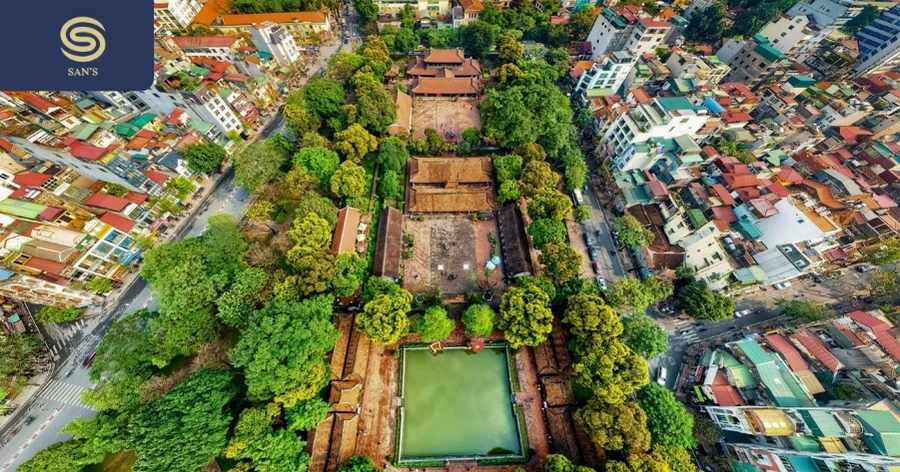
Today, the Temple of Literature Hanoi remains a treasured landmark, with its architecture and gardens meticulously preserved. The temple complex comprises five courtyards, each symbolizing a stage in the journey toward knowledge and enlightenment. The tranquil ambiance and historical atmosphere make the temple a unique place where visitors can learn about the rich cultural heritage of Vietnam.
How Many Courtyards Does the Temple of Literature Have?
The Temple of Literature Hanoi features five distinct courtyards, each with its own significance and structures, leading visitors through the progression of scholarly achievement. Let’s explore each courtyard and its highlights:
The Great Middle Gate
The journey begins at the Great Middle Gate (Dai Trung Mon), the entrance to the Temple of Literature. The gate is adorned with symbolic carvings and inscriptions that invite visitors to embark on a path of learning and wisdom. The side entrances are adorned with lotus flower motifs, symbolizing purity, and represent the initial step into a world of knowledge.
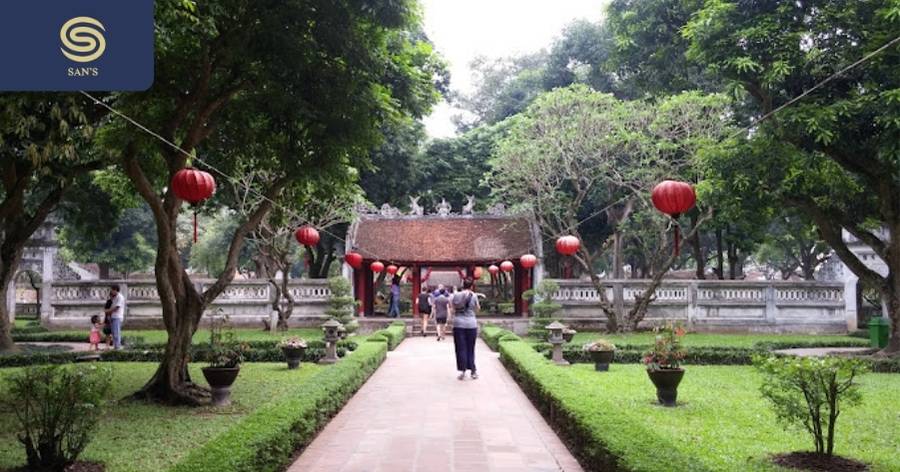
The Constellation of Literature Pavilion
The second courtyard leads to the Constellation of Literature Pavilion (Khue Van Cac), one of the most iconic structures of the Temple of Literature Hanoi. Built in 1805, this pavilion represents the beauty of scholarly achievement and enlightenment. Designed as a two-story structure with wooden pillars and a red tiled roof, it features circular windows that resemble the sun, symbolizing the radiance of knowledge.
The pavilion is often used as a symbol of Hanoi and is a favorite spot for photographs. Visitors can reflect on the scholarly values it represents, which continue to inspire students and educators in Vietnam.
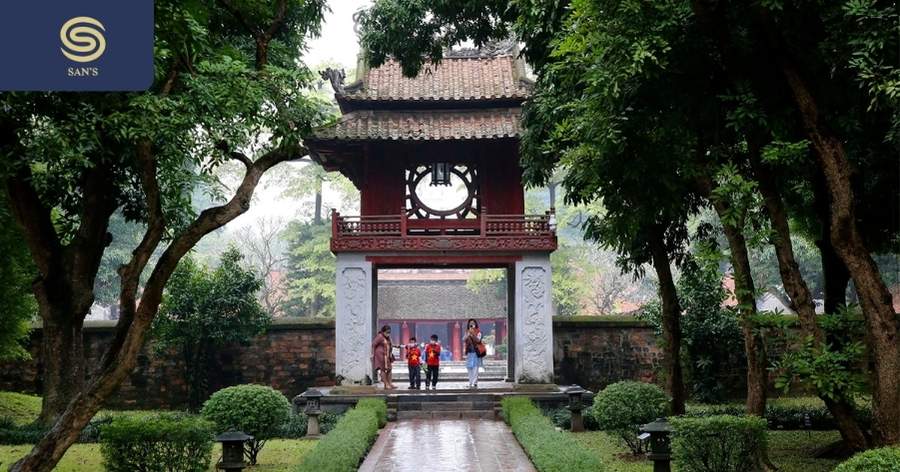
The Well of Heavenly Clarity
After passing through the Constellation of Literature Pavilion, visitors arrive at the Well of Heavenly Clarity (Thien Quang Tinh). This tranquil rectangular pond reflects the surrounding buildings, symbolizing the clarity and depth of knowledge that scholars strive to attain. The pond’s reflective surface also serves as a serene break between the courtyards, allowing visitors to appreciate the beauty of the temple’s architecture.
On either side of the pond are stone steles, each inscribed with the names of those who passed the royal examinations. These steles rest on stone turtle bases, symbolizing longevity and wisdom. The steles are not only historical records but also representations of the respect and honor bestowed upon academic achievement in ancient Vietnam.
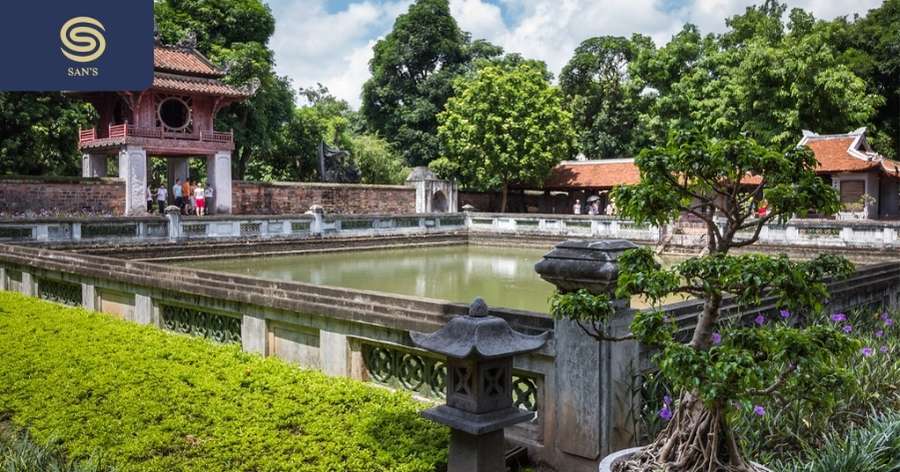
The Gate to Great Success
The fourth courtyard is accessed through the Gate to Great Success (Dai Thanh Mon), marking the path toward higher learning and greater accomplishments. This gate represents the culmination of scholarly pursuit and the rewards of dedication and discipline. Through this gate, visitors enter a space dedicated to Confucius and his four disciples, emphasizing the Confucian values of respect, morality, and humility.

The Grounds of the Imperial Academy
The final courtyard houses the Grounds of the Imperial Academy (Quoc Tu Giam), the centerpiece of the Temple of Literature Hanoi. Here, visitors will find the main temple, dedicated to Confucius, as well as altars honoring notable Vietnamese scholars and philosophers. The Imperial Academy served as Vietnam’s first national university, and it was here that the country’s finest scholars were educated in Confucian principles, literature, and philosophy.
The academy building reflects traditional Vietnamese architecture, with intricate carvings and design elements symbolizing respect for knowledge. This courtyard is a place of reverence and reflection, offering visitors a glimpse into the intellectual history of Vietnam.
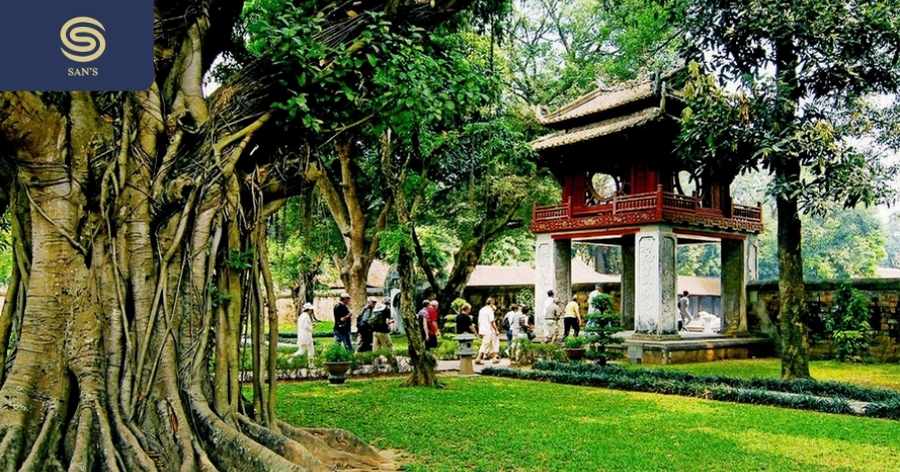
Useful Information for Visitors
Visiting the Temple of Literature Hanoi is a unique experience that offers a blend of historical learning, architectural appreciation, and cultural immersion. Here’s what you should know to get the most out of your visit:
Temple of Literature Opening Hours and Entry Fee
The Temple of Literature Hanoi is open daily, making it accessible for visitors all week long. However, the temple is especially popular on weekends and during public holidays, so visiting on weekdays is recommended for a quieter experience.
- Opening Hours: 8:00 AM to 5:00 PM
- Entry Fee: Around 30,000 VND for adults and 15,000 VND for students
During special cultural events or anniversaries, the temple may offer free admission, providing an excellent opportunity for locals and tourists to learn more about its history.
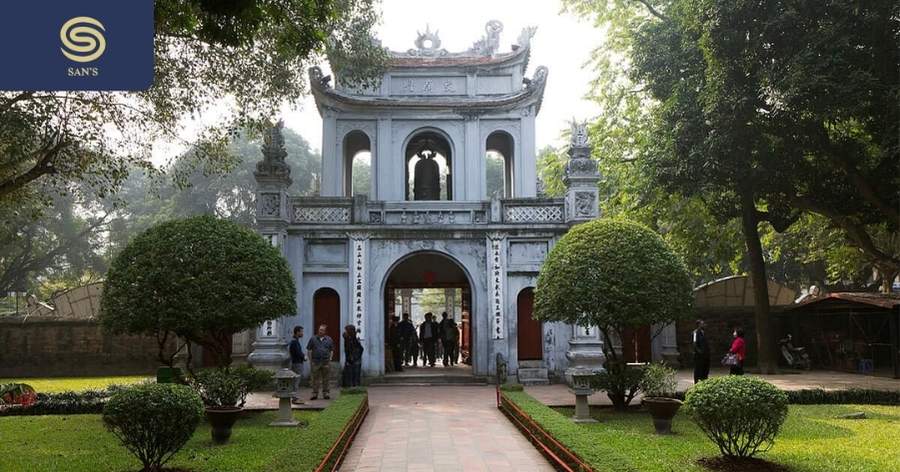
Directions to the Temple of Literature
The Temple of Literature Hanoi is located in the Dong Da District, close to Hanoi’s Old Quarter. You can reach it conveniently using several transportation options:
- By Taxi or Motorbike: You can easily get to the Temple of Literature by taking a taxi or using a ride-hailing app like Grab. If you have your own vehicle, use it.
- By Bus: Several public buses, such as bus number 02, 34, 38, E08 and bus number E09, stop near the Temple of Literature, providing a cost-effective option for visitors.
If you’re staying nearby, the temple is also within walking distance from popular areas, allowing you to explore Hanoi’s scenic streets along the way.
Regulations of the Temple of Literature
Visitors to the Temple of Literature are asked to follow certain guidelines to maintain the sacredness and respect of the site. Dress modestly as this historical and cultural site is of great significance.
In addition, visitors are asked to keep noise to a minimum, helping to maintain a peaceful atmosphere. In addition, visitors are asked not to touch the artifacts and altars to respect their preservation. By following these guidelines, everyone contributes to preserving the respectful and solemn atmosphere that makes the Temple of Literature in Hanoi.
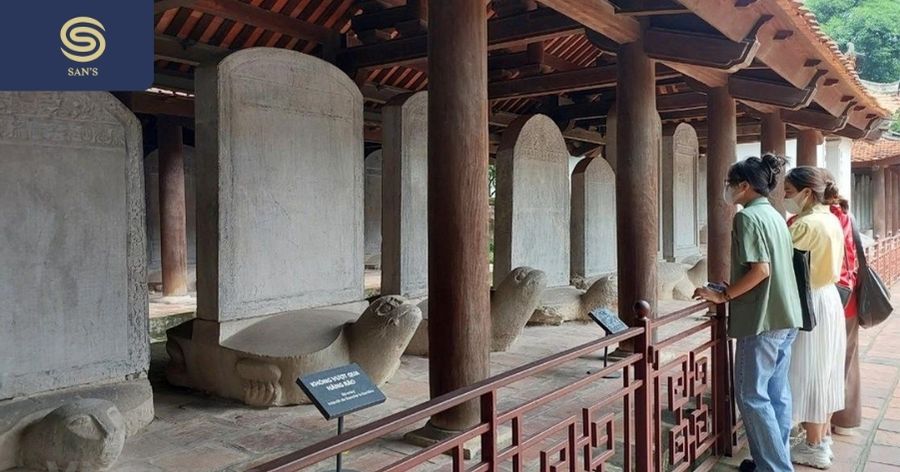
=> See more: Ngoc Son Temple Hanoi: A Must-Visit Cultural and Historic Site
The Temple of Literature Hanoi is a testament to Vietnam’s respect for education, knowledge and cultural heritage. From the entrance gate to the grounds of Vietnam’s first university, every part of the temple has deep historical and cultural significance.
Here are the “Temple of Literature Hanoi: Vietnam’s First University” Wishing you a delightful trip to Vietnam! If you visit Vietnam and the capital Hanoi, you can book a room at San Hotel for the best prices here!
Follow us on Facebook to update the latest travel information daily: San Hotel Series



